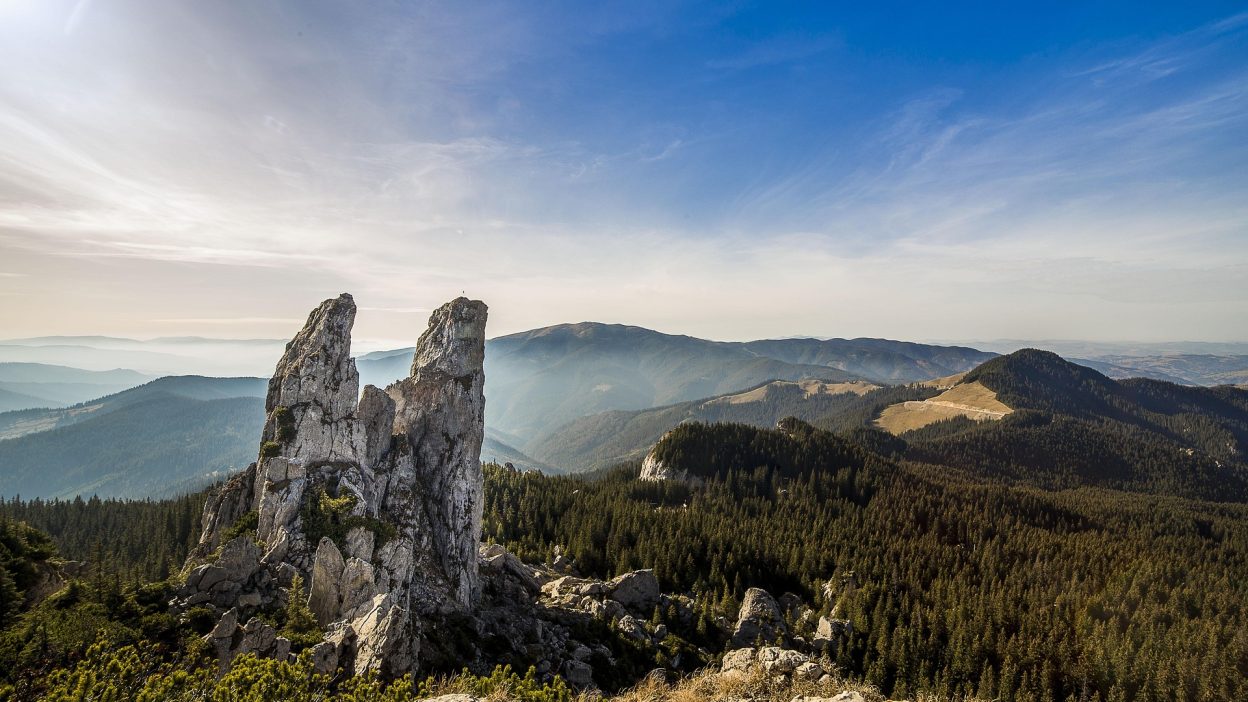Unveiling The Hidden Truths Behind Romania’s Deadliest Quake
The Earth Shook: How the 1940 Vrancea Earthquake Changed Everything
The 1940 Vrancea Earthquake was one of the most catastrophic seismic events in Romanian history. Striking on March 4, 1940, the earthquake measured 7.4 on the Richter scale and devastated much of the country. The tremors were felt not just within Romania, but across neighbouring countries like Bulgaria, Moldova, and parts of Ukraine. The destruction was widespread, with buildings collapsing, roads torn apart, and thousands of people left stranded and displaced.
Beyond the immediate devastation, the earthquake caused long-lasting social, economic, and political changes. It highlighted the vulnerabilities of Romania’s infrastructure and exposed the shortcomings in the country’s disaster management system. The event also raised critical questions about urban planning and how prepared Romania was to face such a powerful natural disaster.
The Untold Truth Behind the 1940 Vrancea Disaster
There are aspects of the 1940 Vrancea Earthquake that remain relatively unexplored in public discourse. Despite its magnitude, much of the real human cost was overshadowed by wartime events, as Romania was on the brink of involvement in World War II. Many survivors and their stories were neglected or left untold in the chaos that followed.
The causes of the Vrancea Earthquake were deeply rooted in the complex tectonic activity in the Vrancea seismic zone. This region, which is notorious for producing powerful earthquakes, was not well-understood at the time, and many attempts to predict or mitigate the damage were unsuccessful. The government’s role in preparedness was also severely lacking, with insufficient measures in place to protect vulnerable populations.
Shattering Lives: The Hidden Consequences of the 1940 Vrancea Earthquake
- Psychological toll: The psychological impact on survivors was profound. Many lost not only their homes but also loved ones, leaving them to cope with trauma and loss. This emotional burden lingered for decades and had long-term effects on future generations.
- Changing family structures: The earthquake caused major disruptions in the family dynamics of those affected. Many families were separated, and the community had to adapt quickly to the chaos. These changes altered the social fabric of affected regions, leading to lasting effects on family roles and responsibilities.
- Impact on future generations: The long-term effects of the earthquake shaped the lives of many who were children at the time. They grew up with a constant awareness of disaster risk and loss, which influenced their decisions later in life, including attitudes toward safety and preparedness.
Why the 1940 Vrancea Earthquake Was More Destructive Than We Thought
The 1940 Vrancea Earthquake was more devastating than originally believed. The intensity of the tremors, coupled with the limited resources available to respond to the disaster, led to massive destruction. The earthquake struck without warning, and while Romania had some basic preparedness plans, they were insufficient for the scale of the disaster.
- The Vrancea fault zone had been studied to some extent, but the full scale of potential destruction was underestimated. The tremors, which lasted for about 40 seconds, caused massive damage, especially in the capital, Bucharest.
- The earthquake’s depth—which was relatively shallow—intensified the effects, causing buildings to collapse and infrastructure to fail. This event proved that even cities built to withstand tremors were vulnerable to such a powerful quake.
The Aftermath of the 1940 Vrancea Earthquake: Is Our Response Enough?
After the earthquake, Romania faced challenges on multiple fronts. The immediate relief efforts were disorganised, and the resources available to the government and local authorities were minimal. Despite the magnitude of the disaster, it took days for organised rescue teams to reach the hardest-hit areas. Many survivors were left without basic necessities like food, water, and shelter for several weeks.
Looking at the aftermath, reconstruction was slow. The government’s response was hampered by the looming threat of war, which meant that economic resources were stretched thin. However, lessons from the 1940 earthquake influenced Romania’s approach to future seismic disasters, leading to changes in building codes and better disaster preparedness in the years that followed.
Could We Have Prevented the 1940 Vrancea Earthquake? The Shocking Facts
- Unpredictability: No technology existed at the time to predict earthquakes with any level of accuracy. The 1940 Vrancea Earthquake struck with little warning, and its massive scale left the country vulnerable to unforeseen destruction.
- Seismology in its infancy: Seismology was still a relatively young science in 1940. Despite significant advancements, scientists were not equipped to fully comprehend or prevent such large-scale earthquakes.
- Human limitations: While the scientific community was developing better understanding of tectonic activities, human limitations at the time meant there were no practical measures in place to mitigate such disasters.
When Earthquake Strikes: How the 1940 Vrancea Earthquake Revealed Our Vulnerabilities
The 1940 Vrancea Earthquake exposed several vulnerabilities within Romania’s infrastructure and society. Key issues included insufficiently reinforced buildings, especially in urban areas, which were not designed to withstand such powerful tremors. This led to widespread destruction, particularly in Bucharest, where thousands of buildings collapsed.
The disaster management system was another major area of weakness. Authorities were unprepared for an earthquake of this magnitude, and the lack of a proper emergency response strategy left survivors to fend for themselves in many areas. This disaster forced Romania to reconsider its approach to both urban planning and disaster preparedness, initiating reforms that would shape future responses to natural disasters.
The 1940 Vrancea Catastrophe: What the Media Didn’t Tell You
The media coverage of the 1940 Vrancea Earthquake was limited and, in some cases, downplayed the full extent of the devastation. The media focus shifted quickly to the geopolitical tensions of the time, overshadowing the human tragedy. Much of the destruction, especially in rural areas, went largely unnoticed in international reports.
In some cases, governmental censorship may have played a role in controlling the narrative around the earthquake. Survivors’ stories were often left untold, and the scale of the damage was not fully understood by the global audience at the time. This lack of comprehensive media coverage contributed to a misunderstanding of the true human cost of the disaster.
The Enduring Legacy of the 1940 Vrancea Earthquake: Have We Learned Enough?
The legacy of the 1940 Vrancea Earthquake remains deeply ingrained in Romanian history. While significant advancements have been made in terms of disaster preparedness and seismic research, the lessons learned from this event were slow to be implemented. Over the decades, Romania has strengthened its earthquake resilience, but the disaster exposed fundamental flaws in its approach to both emergency management and urban planning.
Today, Romania still faces significant challenges when it comes to dealing with natural disasters, but the 1940 earthquake serves as a powerful reminder of the need to continuously adapt and improve. Government action and the public’s awareness have been key to reducing the impact of future seismic events.
5 Short FAQs
- What caused the 1940 Vrancea Earthquake in Romania?
- The earthquake was caused by tectonic shifts along the Vrancea fault zone, which is known for producing powerful seismic events.
- How many people died in the 1940 Vrancea Earthquake?
- Around 1,000 people were killed, with thousands more injured and displaced.
- What was the magnitude of the 1940 Vrancea Earthquake?
- The earthquake measured 7.4 on the Richter scale, making it one of the most powerful in Romanian history.
- How did the 1940 Vrancea Earthquake affect Romania’s economy?
- The earthquake caused extensive damage to infrastructure and buildings, leading to long-term economic setbacks.
- What lessons were learned from the 1940 Vrancea Earthquake?
- Key lessons included the need for earthquake-resistant buildings and better disaster preparedness.
References:
“1940 Vrancea earthquake”
“An Updated Perspective of the Impact of the 1940 Vrancea Earthquake on Design and Construction Practices in Romania”
“Shaken To its Core – 1940 Vrancea Earthquake: Bessarabia, Bucharest & The Mightiest Of Blows (Part Three)”
“The 1940 Vrancea Earthquake. Issues, Insights and Lessons Learnt”
Causes and Effects of the November 10, 1940 Earthquake”https://www.researchgate.net/publication/315528409_Causes_and_Effects_of_the_November_10_1940_Earthquake




